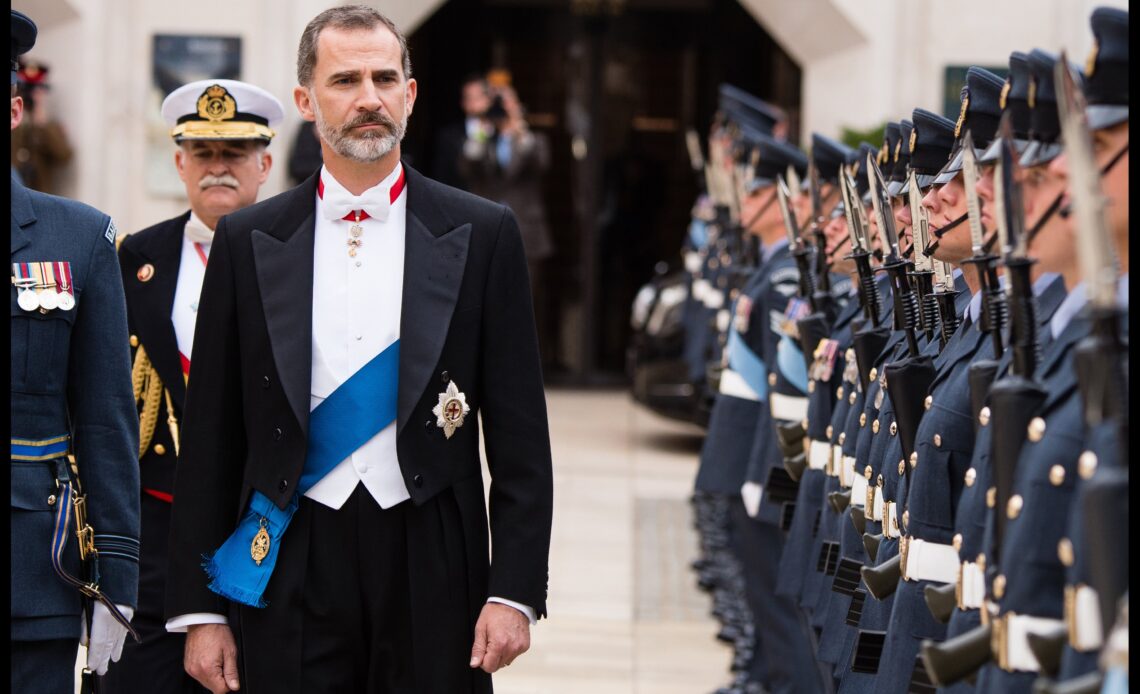
Spain’s general election has seen the conservatives win most votes but not a majority and now negotiations begin as several parties vie to form a government. What is the role of Spain’s king, Felipe VI, in this situation? Maddalena Mastrostefano investigates for Royal Central.
The Spanish monarchy was restored in 1975, following almost 40 years of dictatorship under General Francisco Franco.
General Franco personally selected then-Prince Juan Carlos as his successor. His father, Juan de Borbón, qualified the succession law that excluded him as a “monstrosity” and refused to let go of his claims to the throne until 1977.
To avoid any further risk of descending into another dark period of dictatorship, King Juan Carlos called for a referendum three years later; on 6 December 1978, the population was asked to approve the new constitution, which was ratified on 27 December.
While in its first title, the text shapes the fundamental principles and values of the country, it is the second title that we will analyse in the piece, as it is the one that regulates the monarch’s role within the state’s structure.
Title II, article 56 states in part that the King “arbitrates and moderates the regular working of the institutions, assumes the highest representation of the Spanish State in international relation, especially with those nations belonging to the same historic community, and performs the functions expressly conferred on him by the Constitution and the law.”
Those functions are enumerated in articles 62 and 63 and include legislative duties, such as the promulgation and signing of laws, as well as supervising the creation of a new government. It is also stated that the sovereign will act as the Commander General of the Armed Forces, as well as act as a representative of Spain on the diplomatic scene.
This last point implies that, as head of state, the monarch is expected to welcome new ambassadors and sign his consent for the country to enter new international relations.
As Chief of the Armed Forces, the King is also the ultimate signature in a declaration of war against a foreign country, as stated in section 3 of article 63; however, that power has to be given by the Parliament.
In these apparently small details, Spain’s dictatorial past becomes evident; extreme care was placed in ensuring that the balance of power was detailed in the constitution to avoid one branch of power from overtaking the others.
The second title of the constitution also has a very specific clause regarding regency and guardianship; the norms are included in articles 59 and 60 and, essentially, state that:
- The regency has to be carried out by the closest person to the throne in the line of succession, by a person with Spanish citizenship and who is legally an adult in the country (meaning 18 years or older).
- Guardianship (the caring for an heir to the throne who is underage at the time of their accession) has to be approved by Parliament if it’s not carried out by a blood relative or by someone designed by the late monarch.
There are also two articles concerning the member of the Royal Family; article 58 is dedicated to the consort, and it simply states that the spouse of a sovereign cannot hold constitutional roles outside those dictated in the case of a regency.
Article 57 regulates the succession and the role of the heir to the throne. It states that all heirs will be direct descendants of Juan Carlos I de Borbón and have to follow traditional succession laws: primogeniture and male precedence. This part of the constitution was seriously reconsidered towards the end of 2006 when the Royal Household announced that Princess Letizia was pregnant with the couple’s second child. If that child had been a boy, he would have displaced first-born Leonor. However, to dispel the worries, on 27 November 2006, the couple announced that the Princess was expecting a second daughter, so those worries were put to rest.
It remains to be seen what will happen in the future, as this topic is not at the centre of the debate anymore, seen as though there is a loud group of citizens that would rather abolish the monarchy altogether.
Another key point in article 57 is the notion that the heir to the throne will automatically receive the title of Prince or Princess of Asturias upon entering that position. They will also have to pledge their loyalty to the constitution in front of Parliament once they reach adulthood.
This last point is particularly relevant to current events because Princess Leonor is turning 18 in 2023. And there are already concerns that the ceremony will not take place. Spain’s Parliament will likely be dissolved on 31 October 2023 in preparation for the parliamentary elections that should take place on 10 December next year.
Technically, the Princess could still offer her pledge in front of the Parliament’s Permanent Delegation, but it seems that the government and the Crown have agreed that this would diminish the solemnity of the moment, and it is, therefore, expected that Princess Leonor will have to wait until the new Parliament is operational before performing her Constitutionally-mandated duty.
Since King Felipe’s accession in 2014, the monarchy has made a big effort to bring itself back to its constitutional mandate and to strictly adhere to the role that the sovereign is given by the foundational chart of modern Spain.
The parts of the constitution that concern the Crown can be easily found on Casa Real’s website for full transparency, another sign of the “renewed monarchy for new times” that the King pledged in his accession speech in front of Parliament.

